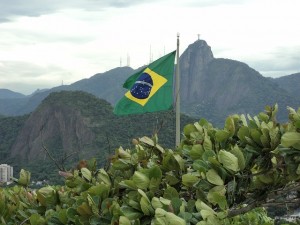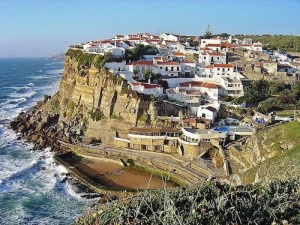Top Dialects of the Portuguese Language
As its name suggests, Portugal is the birthplace of the Portuguese language. Nowadays, however, the vast majority of Portuguese speakers live outside of Portugal. Brazil alone has about 200 million Portuguese speakers, which is about twenty times the entire population of Portugal! And aside from Brazil, Portuguese is spoken in African countries such as Angola and Mozambique. Here’s a decidedly global tour of some of the most common Portuguese dialects.
Image via Husond / Wikipedia
1. Brazilian
With over 200 million native speakers, Brazil is by far the most populous Portuguese-
speaking country. Due to its geographical isolation from Portugal, it has come to develop a distinct dialect compared to European Portuguese.
For example, in Portugal, the informal second-person singular pronoun (“you”) is tu, whereas the formal one is você. In contrast, Brazilian Portuguese uses você as the informal pronoun, reserving senhor (“sir”) for situations that require a high degree of formality.
2. European
European Portuguese refers to the language spoken by the some 10 million inhabitants of Portugal. One might expect that this version of the Portuguese language would be truer to the more ancient forms. However, Brazilian and African varieties are actually more similar to older versions of Portuguese than the European variety, as colonialism has more recently introduced the language into those areas.
Though speakers of Brazilian and European Portuguese can understand each other, there are significant differences. For example, the plural first-person pronoun (“we”) in European Portuguese is nós, so that “we walk” is nós andamos. However, in Brazilian Portuguese, nós does not exist, and instead a gente takes its place, so that “we walk” is a gente anda.
How good is your Portuguese? Find out by taking our free online Portuguese level test!
3. Angolan
Portuguese is the official language of Angola, and it is used by more than half of the population. This means that there are actually more Portuguese speakers in Angola than there are in Portugal. Angolan Portuguese is influenced by the many languages that are spoken in the country. For instance, the word “peanut” is jinguba in Angolan Portuguese, which bears little resemblance to amendoim, which is used in the Brazilian and European varieties.

Image via Pixabay
4. Caipira
Brazilian Portuguese has been heavily influenced by the country’s many metropolitan areas, especially São Paulo and Rio de Janeiro. In more rural areas, however, regional dialects remain strong. The Caipira dialect is spoken in rural areas in the state of São Paulo and neighboring areas, and is distinct in terms of phonology and grammar from other Portuguese dialects.
For example, the Caipira dialect often does not add plural inflections to adjectives: whereas “beautiful things” is coisas bonitas in other dialects of Portuguese, it is often said simply as coisas bonita in the Caipira dialect.
5. Mozambican
Several million inhabitants of Mozambique speak Portuguese either as a native language or fluently as a second language. Like the Angolan dialect, Mozambican Portuguese is influenced by the other languages spoken in the country. For instance, the word “bus” is ônibus in Brazil and autocarro in Portugal, but is machimbombo in Mozambique.
Whether you’re traveling to Brazil, Portugal, or Mozambique, there are plenty of reasons to learn Portuguese. Of course, the best way to do so -- regardless of which dialect you’d like to learn -- is to take tailor-made lessons taught by a native Portuguese speaker. Send us a quick inquiry to learn more about how we can help you learn Portuguese.



